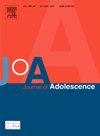Occupational future time perspective and mental health problems across adolescence: Random-intercept cross-lagged panel analysis and alternative variations
Abstract
Introduction
Adolescence is a crucial developmental stage characterized by escalating mental health issues as well as an increasing awareness of future career possibilities. Occupational future time perspective has been shown to be a promotive factor for social functioning and mental health, and a component in evidence-based clinical practices and randomized controlled trial intervention studies. However, it requires more rigorous and ecological corroboration from longitudinal analysis at the within-person level.
Methods
Random intercept cross-lagged panel models with several adjustments and sensitivity analyses were applied to the longitudinal data from the Zurich Project on the Social Development from Childhood to Adulthood (Zurich, Switzerland), to analyze how occupational future time perspective and psychological/neurodevelopmental outcomes (attention deficit hyperactivity disorder symptoms/externalizing/internalizing problems) covaried across ages 13 (N = 1365), 15 (N = 1446), and 17 (N = 1305) in the years 2016, 2018, and 2020, after controlling for sex (52% male), SES, and school type.
Results
A small effect was found in a random intercept cross-lagged panel model whereby occupational future time perspective at age 15 predicted externalizing problems at age 17 (β = .146, p = .05, [95% CI = 0.000, 0.292]), and in a random intercept (contemporaneous) reciprocal panel model specification attention deficit hyperactivity disorder symptoms at age 17 were contemporaneously associated with occupational future time perspective at age 17 (β = −.310, p < .05, [95% CI = −0.580, −0.041]). No cross-lagged associations were found to be robust across different model specifications/adjustments.
Conclusions
These findings suggest that improving occupational future time perspective may have limited impact on enhancing mental health, offering valuable insights for school-based interventions. Further research and replication are necessary to confirm these results.


 求助内容:
求助内容: 应助结果提醒方式:
应助结果提醒方式:


